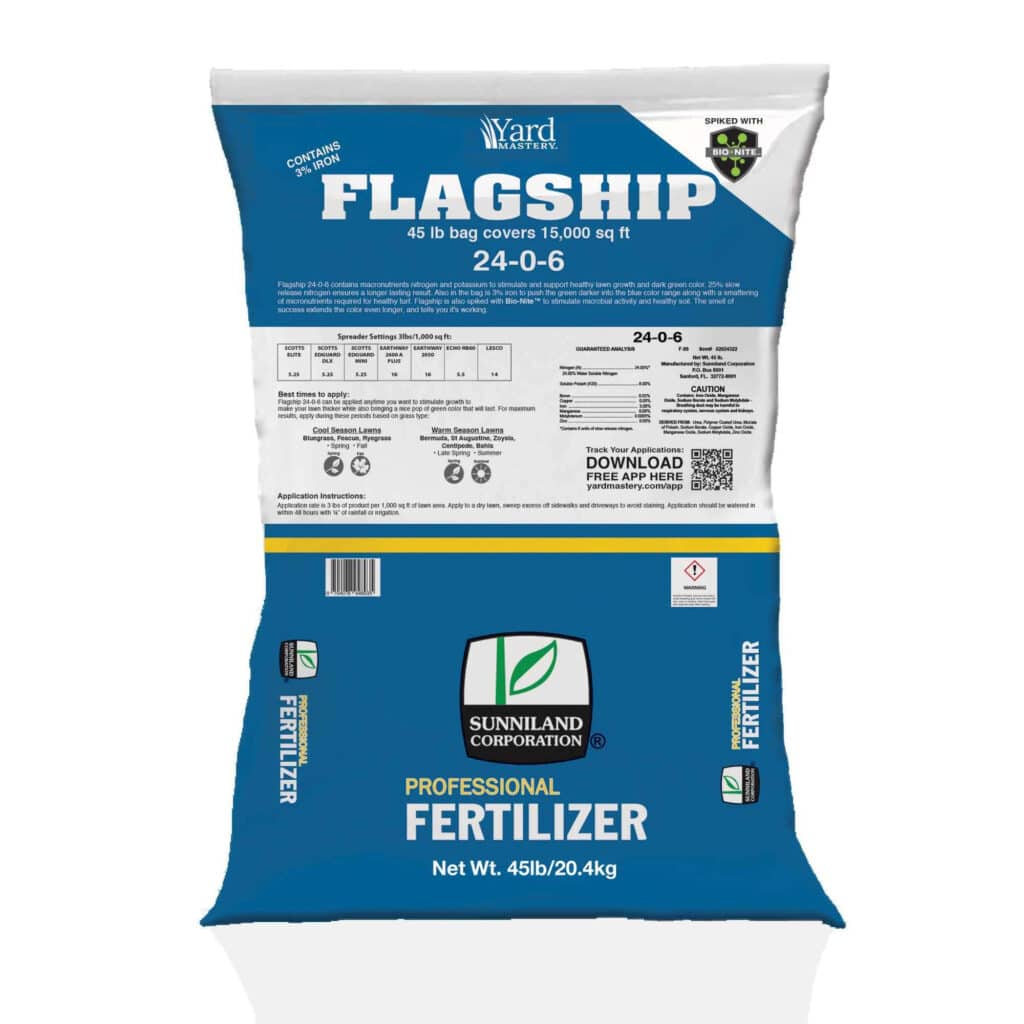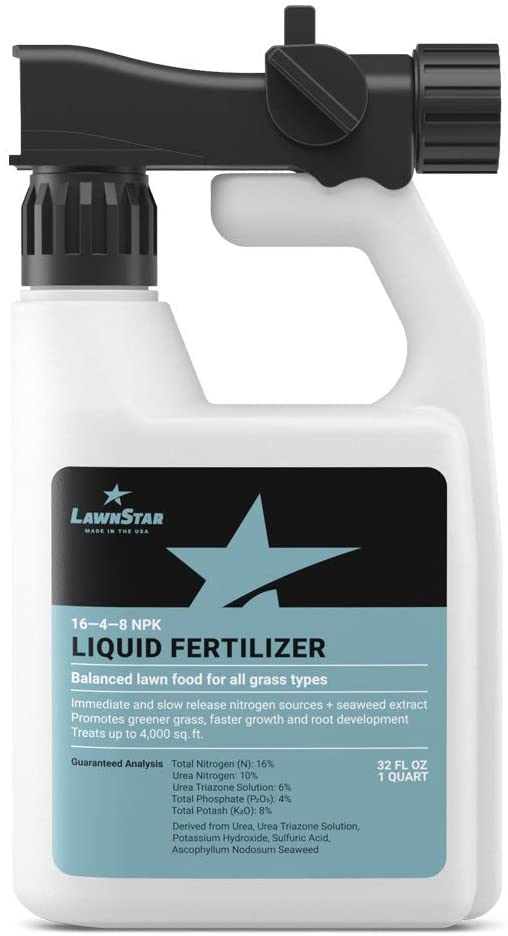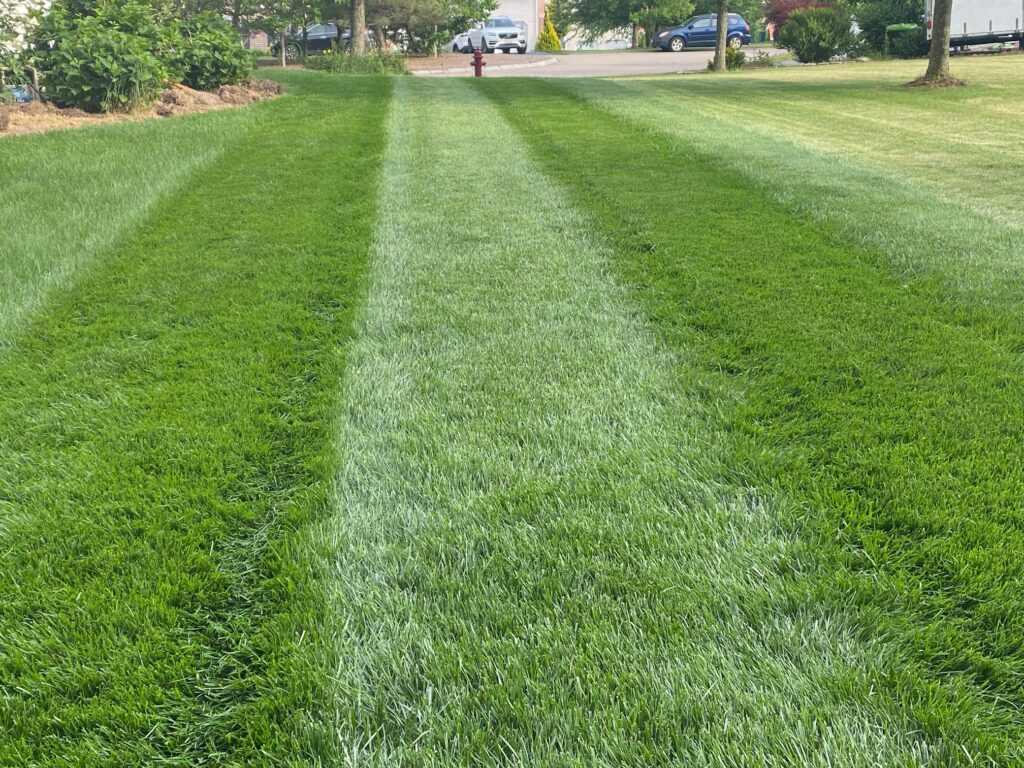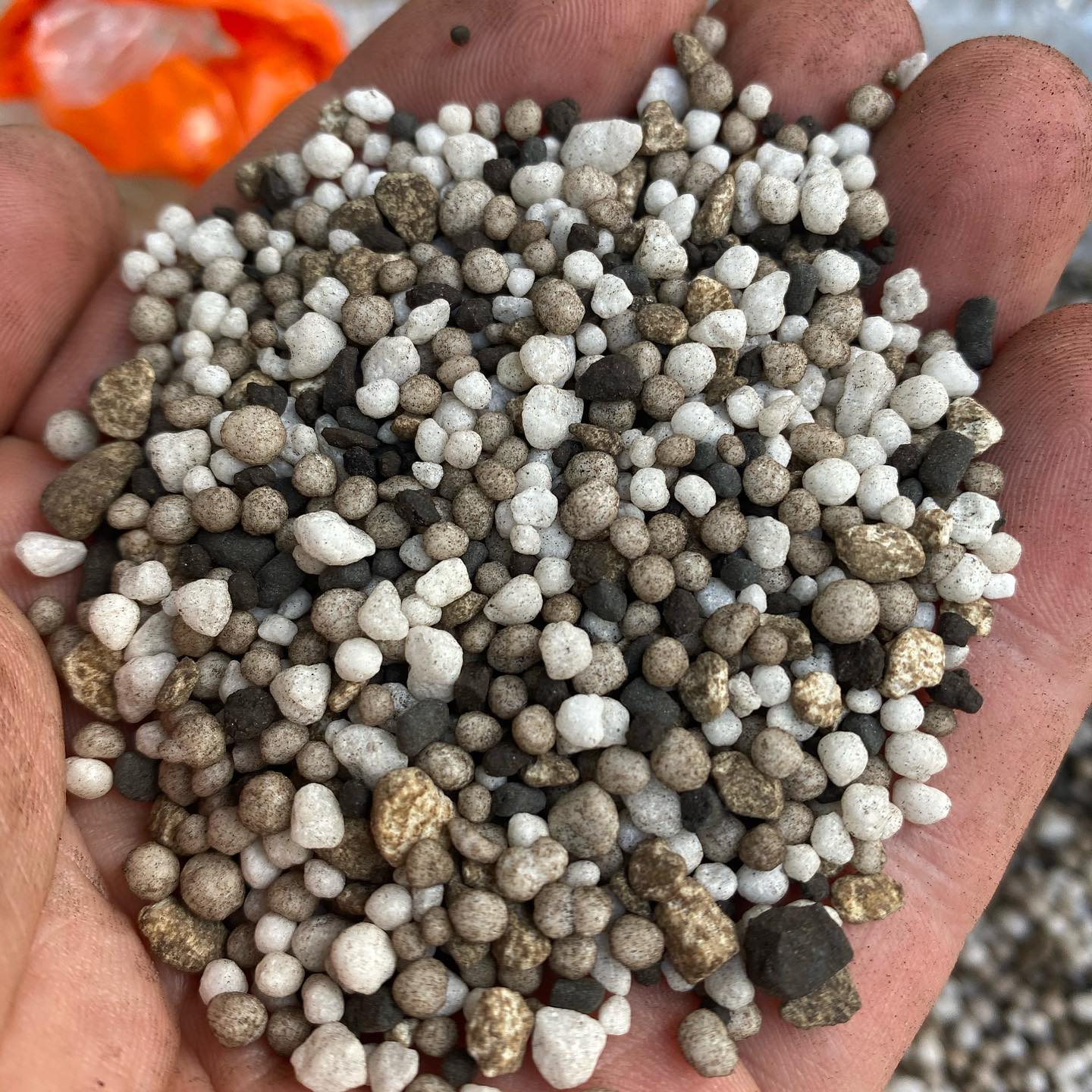A basic and fundamental piece to any lawn care program is watering and fertilizing lawns. To achieve healthy grass and a healthy lawn, you must feed it and water it – be it with granular fertilizer or liquid fertilizer, and with irrigation/sprinklers or mother nature’s rainfall.
When it comes to fertilizing before or after the rain, you shouldn’t overthink it. So, what’s the answer?
Is it Better to Fertilizer My Lawn Before or After Rainfall?
You should fertilize your lawn 1-2 days prior to projected rainfall. All lawn fertilizer needs to be watered in for best results, so the rainfall will help move the fertilizer into the soil and activate the nutrients.
However, if you fertilize the lawn before a heavy rainstorm and torrential downpours, you run the risk of runoff. This is when the fertilizer washes away, out of the lawn, from too much rain before it has a chance to get into the soil.
Rain – whether it’s light rain or heavy rainfall – is much better for your lawn and plants than your irrigation system. Municipal water is heavily processed and contains treatment chemicals whereas rainwater is much purer.
Types of Lawn Fertilizer
Organic Fertilizers
Popular organic fertilizers like Jonathan Green Organic Lawn Food and Purely Organics. They’re made up of natural, organic sources like feather meal, soybean meal, blood meal, and plant-based ingredients from grains & soy. Milorganite is an organic fertilizer that is made from bio-solids.
These granular fertilizers are spread through a lawn spreader, watered into the soil, and taken up through the grassroots. Organic fertilizers are typically slow-release, or slow-release nitrogen, which means the nitrogen releases into the soil more slowly than synthetic fertilizers. Thus, applications can be spread out farther apart.
Organics improve the soil composition while stimulating and feeding the beneficial microorganisms. Over time, these will build a healthy lawn and soil, and promote a lunch lawn.

Synthetic Fertilizers
Popular synthetic fertilizer names are Yard Mastery, Lesco, and Scott’s. These chemical fertilizers are manufacturable chemicals and usually have a higher percentage of Nitrogen-Phosphorus-Potassium (NPK). For the most part, they’re considered “fast release” – at least compared to organics.
Starter fertilizers, winter fertilizers, and your standard 4 Step fertilizers are all synthetic. These granular fertilizers are also spread through a lawn spreader, watered into the soil, and taken up through the grassroots – just like organic fertilizers.

Liquid Fertilizers
Simple Lawn Solutions, LawnStar, and CoRoN are popular examples of liquid fertilizers Instead of being spread through a lawn fertilizer spreader, they’re applied either via a backpack sprayer or a hose-end sprayer. These are similar to synthetic granular fertilizers but in liquid concentration form. Since these fertilizers can also be applied foliar – where some of the nutrients can be absorbed through the grass blades – they can provide a quicker “pop” green grass color.

Soil Amendments
Lastly, though not considered a fertilizer per se, soil amendments are just that – a product applied to the lawn to help boost the soil profile (like organics). Humic acid, fulvic acid, and biochar carbon are considered soil amendments. Some popular brands include Kelp4Less, N-Ext (Greene County Fertilizer), and Lesco Carbon Pro G. These applied over time really promote and build healthy lawns, naturally. These can be applied to both cool-season grasses and warm-season lawns.

Fertilizer Application Tips
Try not to apply fertilizer to wet grass. As you spread granular fertilizer through a lawn spreader, the lawn food can stick to the wet tires and possibly cause dark green grass streaks. It’s not to say it can’t be done, just ensure the fertilizer gets watered in immediately after applying to the wet grass.
For a lush lawn and to promote healthy growth, incorporate organics and soil amendments into your lawn care program. We love all Kelp4Less’ EffortLsh products – particularly the Green lawn & Turf, Extreme Blend, and Green Balance. These fertilizers not only result in green grass, but they also feed and enhance your soil, too. They contain micronutrients and minerals that stimulate the soil microbes and promote deep root growth.

Is it OK to fertilize before the rain?
Yes, fertilizing before rain is generally a great idea. All non-foliar fertilizers need to be watered in, and the rainwater will help dissolve and move the fertilizer into the soil. Just be aware of torrential downpours before you apply fertilizer – as heavy rainfall could possibly wash out the fertilizer before it can actually get into the root system.
How Long Should fertilizer be down before it rains?
You should put fertilizer down 1-2 days before projected rainfall.
What happens if it rains after fertilizing?
Unless it is heavy rain, a normal or light rain will help work the fertilizer into the soil and into the plant’s root system.

